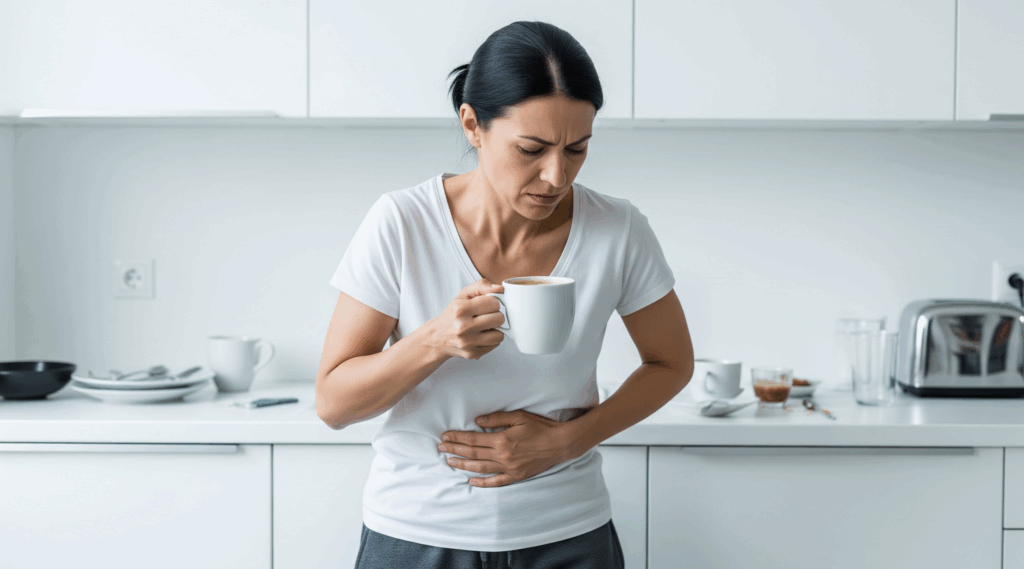Low Acid Coffee Explained: A Gentler Option for Your Daily Brew
If your morning coffee leaves your stomach feeling unsettled, you’re not imagining it. For some, that daily cup comes with an unwelcome side of acid reflux, tightness in the chest, or general digestive discomfort. That’s where low acid coffee enters the picture—not as a marketing buzzword or passing trend, but as a thoughtful option for coffee lovers whose bodies sometimes struggle with regular coffee.
But does switching from regular coffee to low acid coffee really make a difference? Is it just a softer brew, or does it actually help people with sensitive stomachs feel better? The short answer: yes, but not for the reasons you might expect.
What Is Low Acid Coffee, Really?
Low acid coffee isn’t some rare bean grown under mysterious conditions. In fact, it can be made from many of the same beans you already know and love. The key difference lies in how those beans are selected, processed, roasted, and brewed. All of these steps are taken with one goal: to reduce the acids that tend to upset digestion.
It starts with the origin. Coffee grown in lower-altitude regions like Brazil or Sumatra naturally produces beans with less acid. That’s due to slower development and different climate conditions. From there, roasting plays a major role. A darker roast, for instance, breaks down many of the acid-causing compounds in the beans. This leads to a smoother and more stomach-friendly profile. Then there’s brewing. Cold brew coffee, made by steeping grounds in cool water for an extended time, has been shown to contain fewer acidic compounds than hot brewed coffee.

So while there’s no universally agreed-upon definition of low acid coffee, most experts and roasters use the term to describe coffee with fewer acid-triggering compounds. These qualities are typically achieved through a combination of bean selection, darker roasting, and gentle brewing methods. In all cases, it refers to coffee crafted with intention—designed to be easier on digestion. It’s not about removing flavor. It’s about making your daily brew feel better in your body—a thoughtful choice for anyone who feels off after just a few sips of regular coffee.
When Regular Coffee Feels Too Harsh
The acidity in regular coffee isn’t necessarily bad. It’s part of what gives coffee its complexity and brightness. That citrusy note is something many drinkers adore. But that same acidity can be a trigger for others—especially those dealing with acid reflux, gastritis, or more general digestive sensitivity.
If you’ve ever felt a wave of discomfort after coffee or noticed your stomach tighten before you even finish the cup, your body might be reacting to the chlorogenic acids found naturally in coffee. These compounds can prompt your stomach to release more acid, even if you haven’t eaten yet. Throw in some caffeine—which naturally gets things moving—and suddenly that warm, familiar drink becomes a bit overwhelming. It’s a reaction that’s especially common when coffee is enjoyed on an empty stomach.

For people with a sensitive stomach, this isn’t just a matter of taste. It’s about how their body responds to coffee’s natural acidity. While regular coffee works perfectly fine for many, others may find it a bit too intense at times. In those cases, low acid coffee offers a gentler option—one that lets them enjoy their favorite ritual without the discomfort.
What Makes Low Acid Coffee Different from Regular Coffee?
The most important difference lies in the chemistry. Low acid coffee typically has a higher pH, which simply means it’s gentler on digestion. That’s because darker roasting reduces some of the naturally harsh compounds in coffee, while cold brewing brings out flavor without drawing in the elements that often cause irritation for those who are more sensitive to what’s in their cup. It might not sound like a big change, but your body often notices the difference. Less irritation means fewer chances of that familiar burning or bloated feeling after your cup.
There’s also a sensory difference. Low acid coffee tends to taste smoother and easier to enjoy than regular coffee. It might not have the same brightness or fruity sharpness you’d find in a vibrant Ethiopian roast. But it offers something equally enjoyable: a rich, balanced cup that’s simply more comfortable for those who find regular coffee a bit too intense.
For those who still want the energy boost, low acid coffee usually contains caffeine—unless you specifically choose decaf. You’re simply avoiding some of the harsh side effects that can come with regular brews.

If you’re still not feeling great—even after switching to low acid coffee—it could be the caffeine rather than the acid. In that case, decaf might be worth exploring. While it doesn’t reduce acidity directly, removing caffeine can make a big difference for those sensitive to its stimulating effects. We dig into that more in our article Decaf Coffee Benefits: Enjoy the Flavor Without the Buzz.
Should You Make the Switch?
If your usual cup doesn’t sit quite right, that doesn’t mean you need to give up coffee altogether—it might just mean there’s a better version waiting to be found. Low acid coffee offers a smoother way to enjoy what you love, especially if your body needs something a little more gentle.
This isn’t about giving up your morning ritual. It’s about adjusting it to work for you. From thoughtful bean choices to brewing methods that support comfort, there are more options than ever for making coffee a pleasure again.
In the end, what matters most is how your coffee makes you feel. And when you find a brew that brings energy without discomfort, flavor without fallout—that’s the kind of coffee that feels worth returning to.


